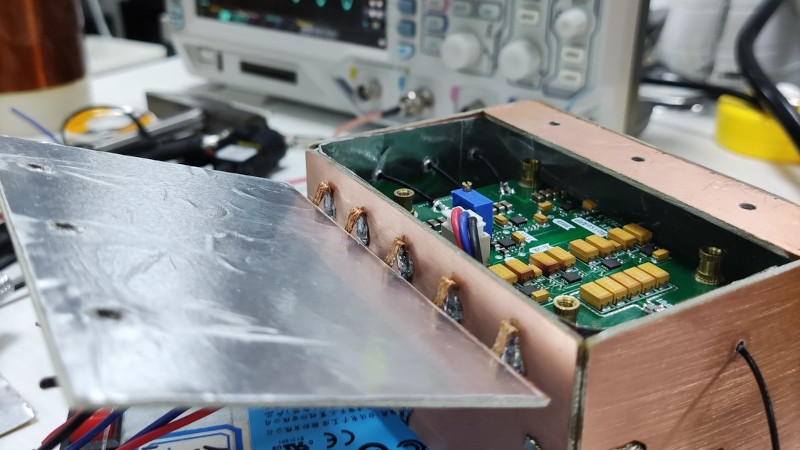When something is described as “Low Noise”, it is by the nature of the language a relative phrase. The higest quality magnetic tape is low noise compared to its cheaper sibling for example, but still has noise many would consider unacceptable. In instrumentation however, “Low Noise” has to really mean just that, with a range of specialist techniques to produce circuitry with a truly low noise level for the most demanding of signal applications. As an example [Floydfish] has created a low noise instrumentation amplifier that should serve as a learning exercise for anyone interested in pushing low noise circuitry to the limit.
Anyone who can dredge the hazy recesses of their mind for barely-remembered electronics lectures will know that the overall noise figure of a system is dictated by that of its first component. Thus perhaps the most interesting part of the schematic is at the input, where a row of low-noise op-amps are presented in parallel. We have to admit having to look this one up, to find that it’s a technique whereby the signal outputs of each chip are the same and thus sum, while the noise output of each is different and thus the summed noise output is proportionally lower. This stage is then followed by a buffer and a set of filters for different output frequency ranges.
Our op-amp competition of which this is a part is certainly delivering the goods when it comes to the amny techniques with which these versatile parts can be used. Few of us may need to make such a low noise amplifier, but at least now we’ve learned how.

















The parallel op amp idea caught my attention too, and when I saw it, it triggered an interesting recollection.
I recalled something I read, perhaps in to 80s, about efforts to transcribe and preserve Edison cylinder recordings. In those cases where two copies of the cylinder could be found, they were both played simultaneously on a double-width mandrel. The signals were summed. Synchronized content was additive, while noise (because of its essentially random nature) was not.
This was said to improve the signal to noise ratio by as much as 3db.
Neat idea to capture multiple samples in parallel.
I searched for a while how to stack scans of the same photo because I always seem to find dust, hair on scans no matter how much I clean.
I ended up adding them manually after an affine registration using gimp to mask defects.
I only mention it here because I’m sure someone on HaD knows how to repurpose astrophotography stacking for home photo scanning?
I doubt it would have worked very well since the two recordings would have had different variations in speed when they were cut. The recordings were initially copied by simply placing multiple recorders in front of the band. It was the same for early phonograph discs as well. The band would record a batch, then swap out new blanks, and record again… over and over. That made each copy unique.
These were entirely mechanical devices. When electronic amplification came around, they would use one master recording to drive cutters that would cut multiples. Later they figured out how to make a metal master record and duplicate it by stamping.
This is a very nice ‘hack’, especially with multi-op-amp packages. Noise is reduced by the square root of the number of amplifiers. The 8 amplifier circuit cuts noise by a factor of 1/2.8 or about. In terms of the not-so-intuitive dB that must be about ….. -9dBV. Four 4-amp chips gives root(16) or a factor of 1/4 –> -12dB. What modern quad is commonly used like the old LM324?
This sounds a lot like how balanced audio rejects noise.
https://en.wikipedia.org/wiki/Balanced_audio
Interesting part the opa1612, although a bit costly. If you don’t aim at extremely low noise for instrumentation but need say pro audio quality (pro audio = professional audio, not audiophoolery) the lm4562 is a great part that costs a fraction of the opa1612.
The most challenging part is finding a biscuit/candy box that meets all the specifications.
Exactly. I’d be interested to see if any of the ideas improve on Todd Owen & Amit Patel’s implementation in LTC/ADI App Note 159, which was based on Jim Williams’ AN83. It won’t be easy to do.